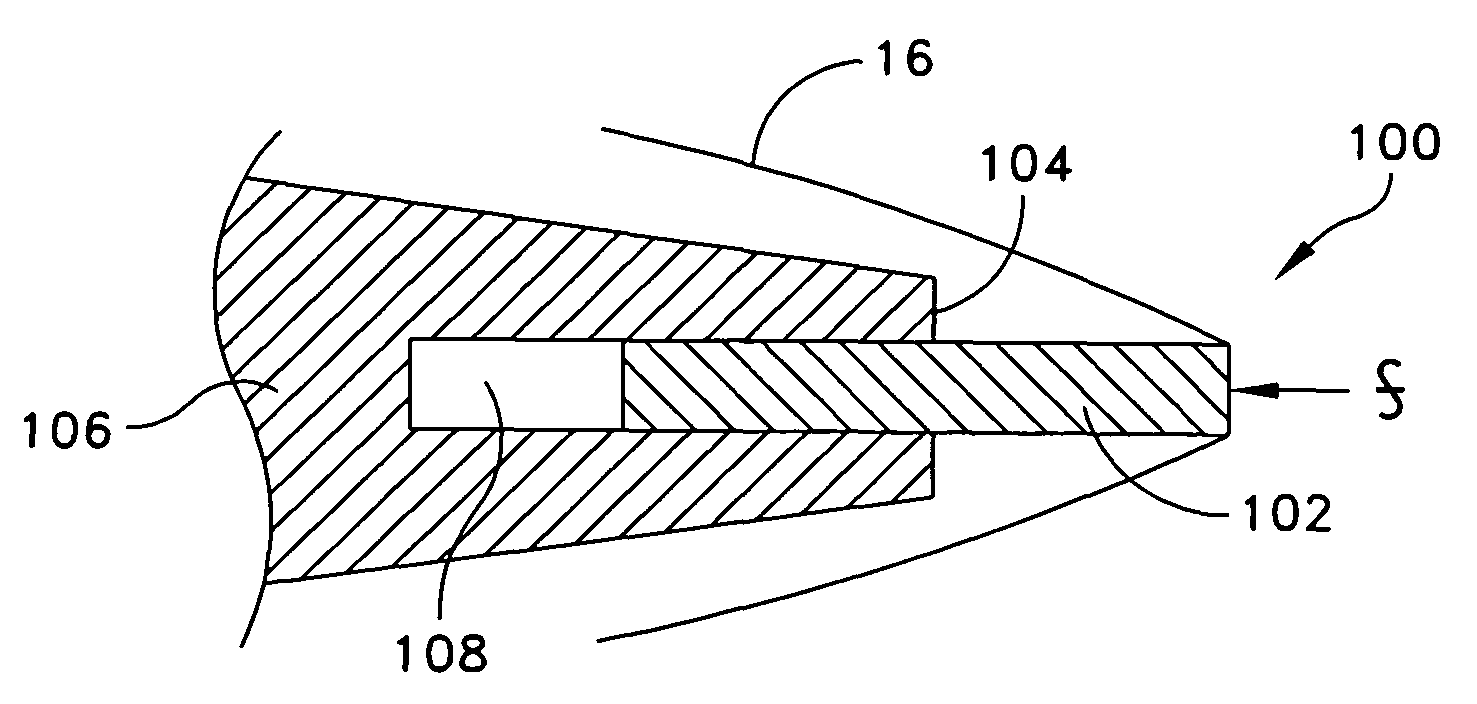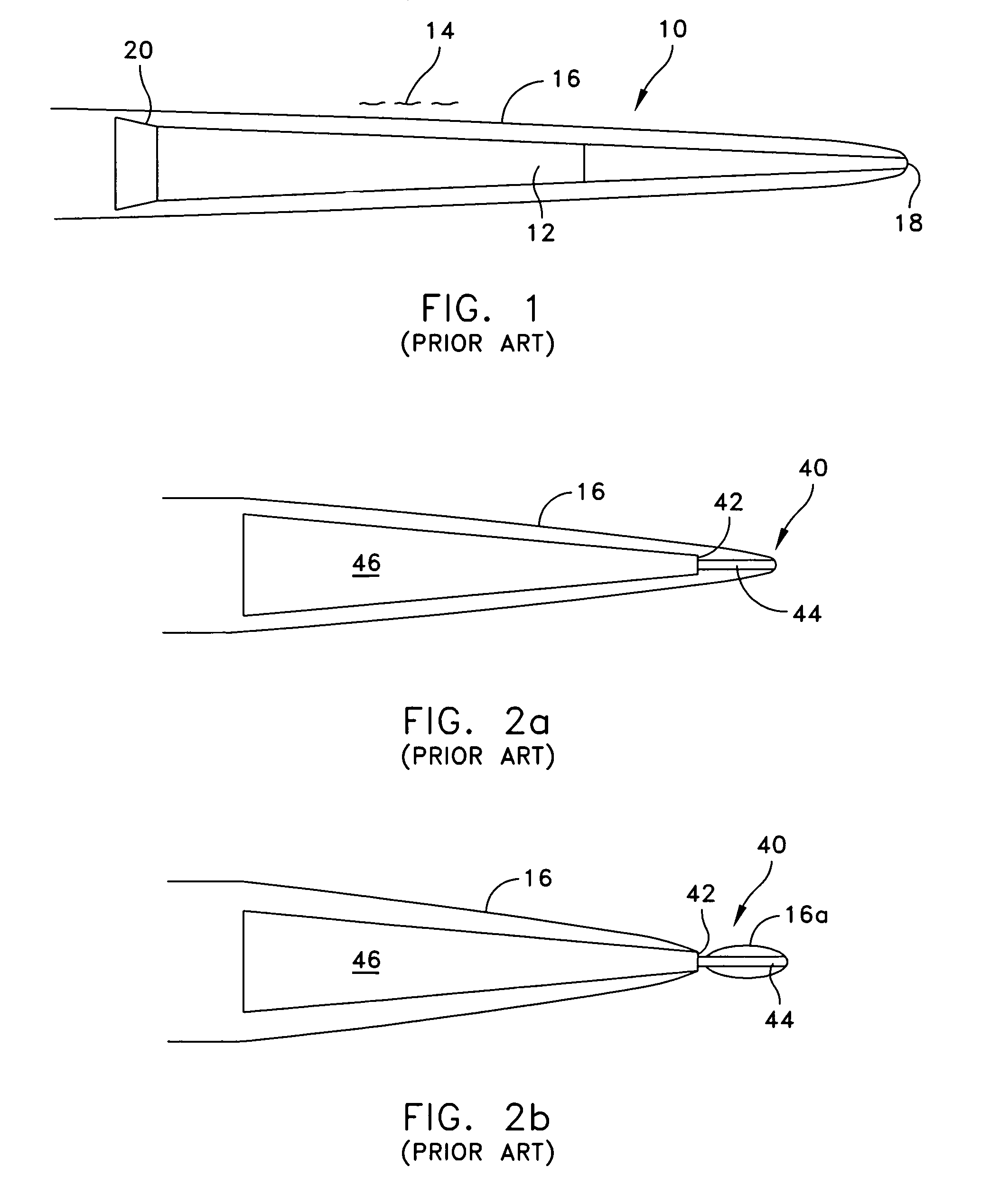Telescoping cavitator
a cavitator and telescopic technology, applied in the field of high-speed underwater projectiles, can solve the problems of tight tolerances that must be maintained, and achieve the effects of reducing drag resistance, maximizing projectile range, and reducing projectile drag resistan
- Summary
- Abstract
- Description
- Claims
- Application Information
AI Technical Summary
Benefits of technology
Problems solved by technology
Method used
Image
Examples
Embodiment Construction
[0021]With reference to the above described drawings wherein like numerals represent like parts throughout the several figures, there is shown a telescoping cavitator piston system in accordance with the teachings of the present invention.
[0022]Rather than relying on the velocity decay of a high speed projectile to engage a secondary cavitator, a variable geometry configuration is now described where the primary cavitator is movable and is allowed to transit backwards at a controlled rate as the projectile travels through the water. The combined action of changes in the forward cavitator geometry and the reduction in size of the vaporous cavity due to projectile slowing induce the secondary cavitator to engage the vaporous cavity at precisely the desired point in the projectile trajectory.
[0023]FIG. 3 illustrates the basic telescoping cavitator design concept generally identified as 100. Initially, a primary cavitator piston 102 extends from the nose 104 of projectile 106 with a por...
PUM
 Login to View More
Login to View More Abstract
Description
Claims
Application Information
 Login to View More
Login to View More - R&D
- Intellectual Property
- Life Sciences
- Materials
- Tech Scout
- Unparalleled Data Quality
- Higher Quality Content
- 60% Fewer Hallucinations
Browse by: Latest US Patents, China's latest patents, Technical Efficacy Thesaurus, Application Domain, Technology Topic, Popular Technical Reports.
© 2025 PatSnap. All rights reserved.Legal|Privacy policy|Modern Slavery Act Transparency Statement|Sitemap|About US| Contact US: help@patsnap.com



